Why an Overclockable Core i3 Might Not Exist: The Supermicro C7H170-M and Intel Core i3-6100TE Review
by Ian Cutress on March 17, 2016 10:30 AM EST- Posted in
- CPUs
- Intel
- Motherboards
- Core i3
- Supermicro
- Overclocking
Supermicro C7H170-M Software
Historically outside of the big four motherboard manufacturers mentioning a software package usually throws up some horror stories or completely blank looks. I have had manufacturers provide just the basic drivers on disk before, or that plus a basic tool with a poor GUI that ends up crashing when you select a few options. I set aside my predispositions, as with every review, and was looking forward to Supermicro’s software attempts, especially given our previous discussions about how interested they are in the consumer market. In our meetings together back at Computex I laid out the fact that their competitors have many years of experience in this, so it may take some time to match their quality. In a surprising twist, it seems that Supermicro has fallen onto their historic experience and gone not so much with a software GUI, but a web interface for their analysis tools. They call it Super Doctor 5.
I should explain. Supermicro, as a server company, has for many years dealt with management chips (such as Aspeed variants) that allow users to access some system controls and monitoring tools via a web interface even when the system is powered but not turned on. Having created their own IMPI interfaces for these management chips for a number of years, these tools were turned to the consumer crowd. Typically a consumer motherboard will not have a management chip, so this is more just an interface for the user to see the current status or adjust some minor aspects to the system.
As shown in the graph above, after an initial install, we get the standard motherboard monitoring metrics: fan speed, voltages and temperatures. There is the motherboard name listed, but we don’t have a series of the usual information I would want: CPU installed, CPU frequency, memory installed, memory speed, storage devices attached, boot order, fan speeds, and/or perhaps even a picture of the motherboard in use. There are a lot of things possible, but this is a basic list I would expect.
Perhaps unsurprisingly then, all the information I want is in the System Info tab along the top. The interface is easy to use, for sure: a summary with separate options on the left, with the results on the right. The problem for me is that the interface is lifeless – there’s no user experience here. A user in 2016 normally requests a tailored and styled experience, but here there is none to speak of.
Some of the sub menus, like this Disk Drive one, is more along the lines of what looks good, although the decision for width being at 100% makes everything look stretched.
The configuration tab links in with the hardware monitoring to give a series of alerts should the system get too hot or something fail and voltages drop. A user can set up an SMTP email server which can be used to send an email when it happens – a standard thing in the server industry, but you rarely see it in the consumer part because if the system gets a low voltage point, it is more likely to shut off rather than have something always-on to send an email. There is also an option here for users to flash the BIOS.
The monitoring tab shows the boundaries for each of the components the user can monitor, and makes them adjustable via text boxes.
One interesting addition is this tab on power control, to turn the system off. Again, this is more of a server feature – log in through the management chip in order to restart a system that isn’t responding. There isn’t much demand for this in a management chip-less consumer based system.
Overall, Supermicro’s software package is interesting, if a bit light. Typically for a consumer product we get full fan controls, or if overclocking is enabled, the ability to adjust base frequency and voltages on the fly. There’s also the lack of added software features, which we see on other vendors, such as audio packages or gaming focused software which Supermicro doesn’t have (macros, sniper features, network management).


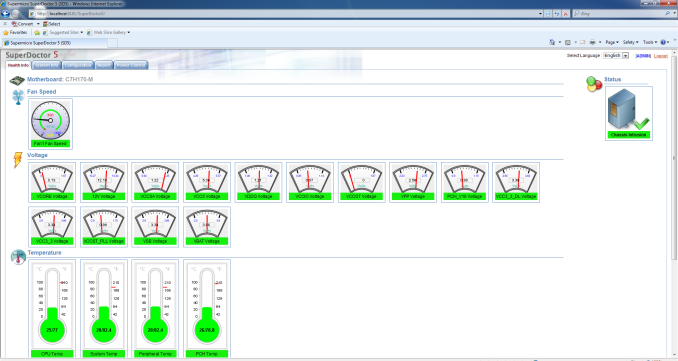

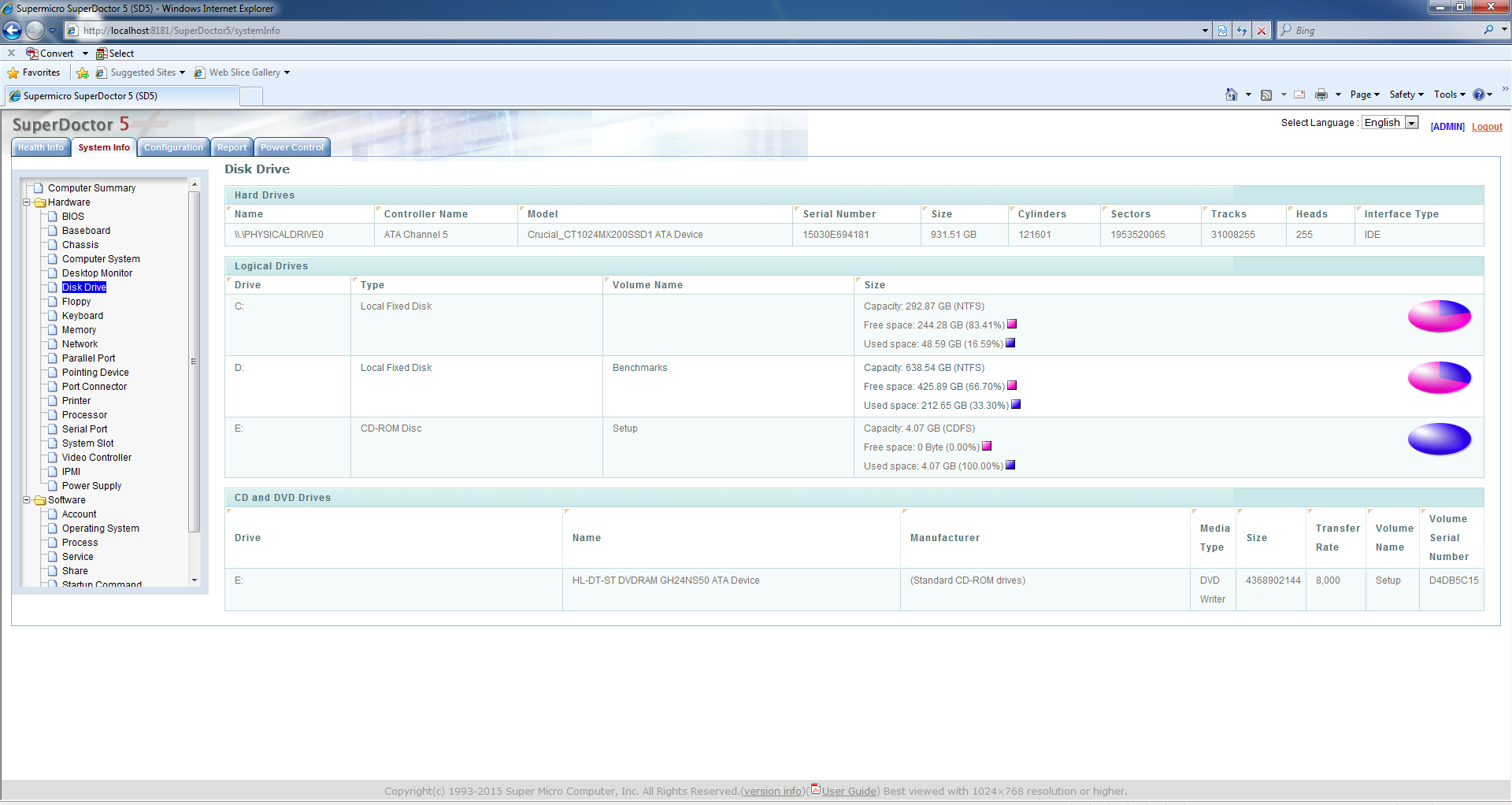
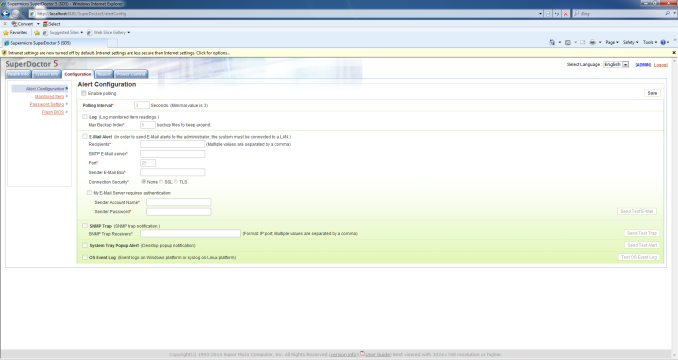
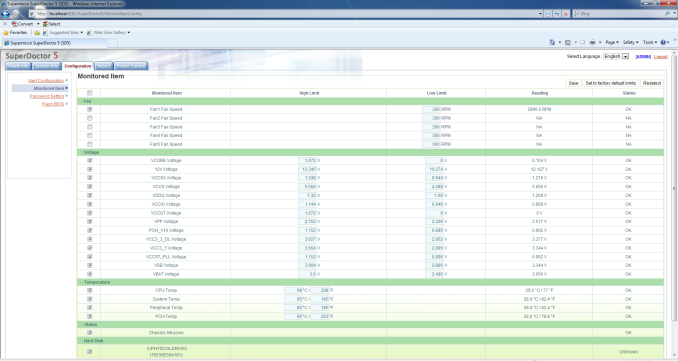
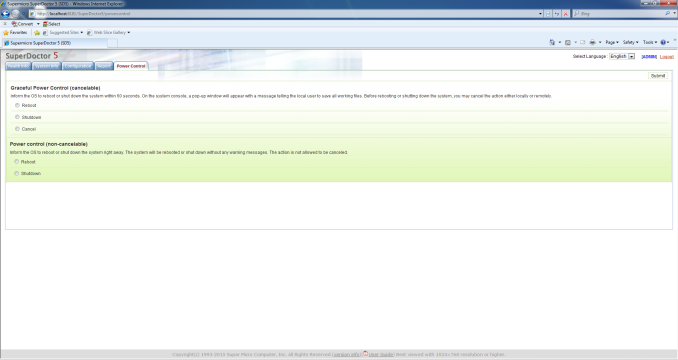
 - First Run_thumb.png)
 - Health_thumb.png)
 - H2_thumb.png)
 - System Info_thumb.png)
 - HDD Info_thumb.png)
 - Config_thumb.png)








62 Comments
View All Comments
Tunrip - Friday, March 18, 2016 - link
I began reading Anandtech long before I actually had a PC, let alone began overclocking.What was that Celeron everyone raved about back in the day? Celeron 200A or something?
I remember Anand used to make reference to it. These overclockable i3s remind me of that. A budget chip that could blow away the higher-performing (and costing) chips of the day when overclocked.
Simpler times... :)
ses1984 - Friday, March 18, 2016 - link
So Why Do We Not See an Overclockable i3 CPU? No competition from AMD.Macpoedel - Saturday, March 19, 2016 - link
Zo SuperMicro seeded you a slow Core i3 that you only got as vast as a regular Core i3. Basically what you showed Here is that a regular Core i3 6100 isn't !much slower than a regular Core i5 6500 but it is over $50 cheaper. Could it have hurt to mention that a Core IE 6100 runs at 3,7GHz?Couldn't you just get the Core i3 6100 yourself or is Anandtech not allowed to buy hardware? I get that you can't just go out and buy a Core i7 5960x or a GTX Titan X, but the company couldn't pay a $100 CPU? Funds can't be that tight. The only conclusion I can make is that you have some deal to only use seeded parts.
Honestly what is the point of this 15 page article if you don't get the relevant parts? Are you yourself satisfied about these results? I think you've done a lot of work completely in vain. It's good that you try to be a little more than just another promotion channel for Intel/SuperMicro/etc but you should have been a little more critical to yourself when reviewing the results and considering the parts you're using.
Macpoedel - Saturday, March 19, 2016 - link
Oops some words got autocorrected to Dutch in the first paragraph, but I guess it's clear what I'm saying, can't edit apparently.stardude82 - Saturday, March 19, 2016 - link
I don't see the value here when you are spending such a premium for a budget board. Just looking at Newegg, there is only a $10 savings going from an i3-6100 with this board to an i5-6500 with a H110 board.lagittaja - Monday, March 21, 2016 - link
What a pointless article. A 15 page long article which is completely pointless.Are you yourself satisfied with your article Ian?
What did this tell us consumers?
That if you take an unobtanium slow arse i3 and OC it, it performs about the same as the regular i3's which are widely available?
Great scott! I did not expect that! Mind blown!
Now run along to the store and grab a 6100/6300/6320 and do proper testing. We want to see that 4.5-5Ghz i3 go head to head against the OC'd i5..
LuxZg - Monday, March 21, 2016 - link
I'd like to say that part about BIOS obviously isn't true, as people have tried and succeeded to revert back to older versions. Example:"Assuming you can get your hands on the OC BIOS it is possible to flash back to the previous version to regain the base clock overclocking ability. Again the microcode isn’t written to the CPU and is kept at the BIOS level so rolling back isn’t a problem.
To confirm this, I updated my Z170 Extreme7+ motherboard to version 2.60 and sure enough the overclock no longer worked. After rolling back to version 2.16 the ability to overclock my non-K processors returned."
source: http://www.hardwareunboxed.com/current-state-of-in...
StrangerGuy - Monday, March 21, 2016 - link
Free lunch is: Abit BH6 + 300A, nForce 2 + unlocked Athlon XP, P35 + <$200 ConroeNot free lunch: Anything today thanks to incredibly restrictive CPU/chipsets lockdowns. With my 4790K already stock at 4.2GHz I'm not going to bother with OC. I'm not even going to mention the absurdity of pairing $100+ mobo just to hack-OC a $100 already at 3.7GHz CPU that would probably get locked down by Intel with a stealth microcode update.
Rob27shred - Tuesday, March 22, 2016 - link
Great read! Definitely gives a very clear explanation of why Intel has denied us a K SKUed i3. I was very excited when I first heard of being able to OC non K SKUed Skylake chips. I have an extra GB Z170XP-SLI mobo & was planning on getting an i3 6XXX to have a little fun with. Now I have to look into it further as I don't want to buy an i3 & not be able to OC it.It's a shame that Intel pulled the rug out from under this so quickly but I from a business point of view you really can't blame them. I got hopes that other ways around Intel's micro code update will be seen though. I heard ASrock released a mobo aimed squarely at getting around the new restrictions.
yhselp - Tuesday, March 22, 2016 - link
Sheeeit! That's the best damn AnandTech article in a long, long time. God bless you, Ian! Fantastic. Quintessential AnandTech! I'm thirsty for more.Maybe a super in-depth article on the effects of faster RAM on modern games? DDR4@3200 seems essential for a new build nowadays, and a DDR3@2133/2400 upgrade could potentially be a great upgrade for gamers stuck on 1333/1600. 16GB a must for Windows 10 gaming? Maybe an article on GPU overclocking, AMD GPUs driver overhead, achieving minimum frame-rates, etc.